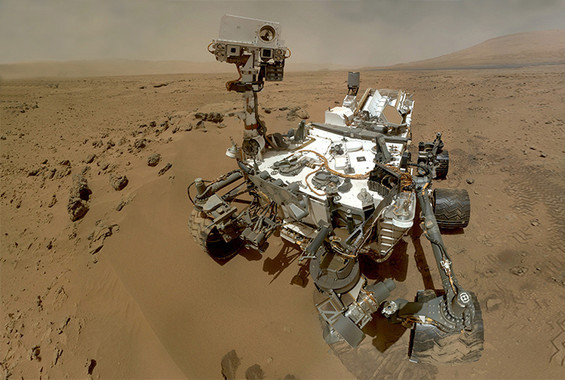Mars: Curiosity data confirms methane in Red Planet atmosphere

Detailed analysis of data from the tunable laser spectrometer in the SAM (Sample Analysis at Mars) instrument on the Curiosity rover has unequivocally detected an episodic increase in the concentration of methane in Mars' atmosphere.
A spike showing an increase of ten times the basal levels of methane concentration (around 0,7 ppbv) was seen on 60 of the 600 Martian days it scanned.
This is believed to be a strong indicator of recent microbial life on the planet.
According to Francisco Javier Martín-Torres, a researcher at the Andalusian Institute of Earth Sciences, who was part of the study, the new questions posed by these results far outnumber the answers it does provide.
"It is a finding that puts paid to the question of the presence of methane in the Martian atmosphere, but it does pose some other more complex and far-reaching questions, such as the nature of its sources — which must lie, we believe, in one or two additional sources that were not originally contemplated in the models used so far. Among these sources, we must not rule out biological methanogenesis.
"Another new question is related to the bizarre evolution of methane in the Martian atmosphere after its emission. Both questions should be addressed in the future with specifically designed new research."
Methanogenesis, the formation of methane by microbial bugs known as methanogens, could be behind the methane detected. The spikes could indicate the sources being shut on and off or wind simply blowing away the evidence.
It could also indicate sunlight degrading organic material left by meteors.
The TLS is a two-channel tunable laser spectrometer with a much reduced margin for error and guarantees the accuracy of results.
Mars Express and Mars Global Surveyor observations
Ever since the telescope in the Mauna Kea Canada-France-Hawaii Observatory first announced the detection of methane in the Martian atmosphere, several other measurements of the gas conducted using earth-based instruments and also satellites like the Mars Express and the Mars Global Surveyor have thrown up contradictory observations.
Some suggested a distribution pattern that was limited in space and time.
Using available photochemical and general circulation models defining the Martian atmosphere, astronomers believe that any methane in Mars would remain there for an average 300 years, and during this period it would be homogeneously distributed across the atmosphere.
Curiosity had also detected the organic compound chloromethane in Martian soil samples, while many studies – on meteorites as well as image analysis of the planet's landscape -- have pointed to signs of abundant water in the planet's past.
© Copyright IBTimes 2025. All rights reserved.





















